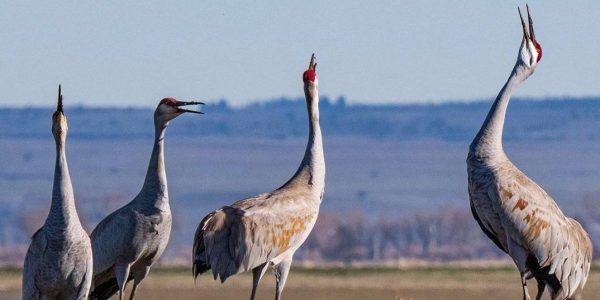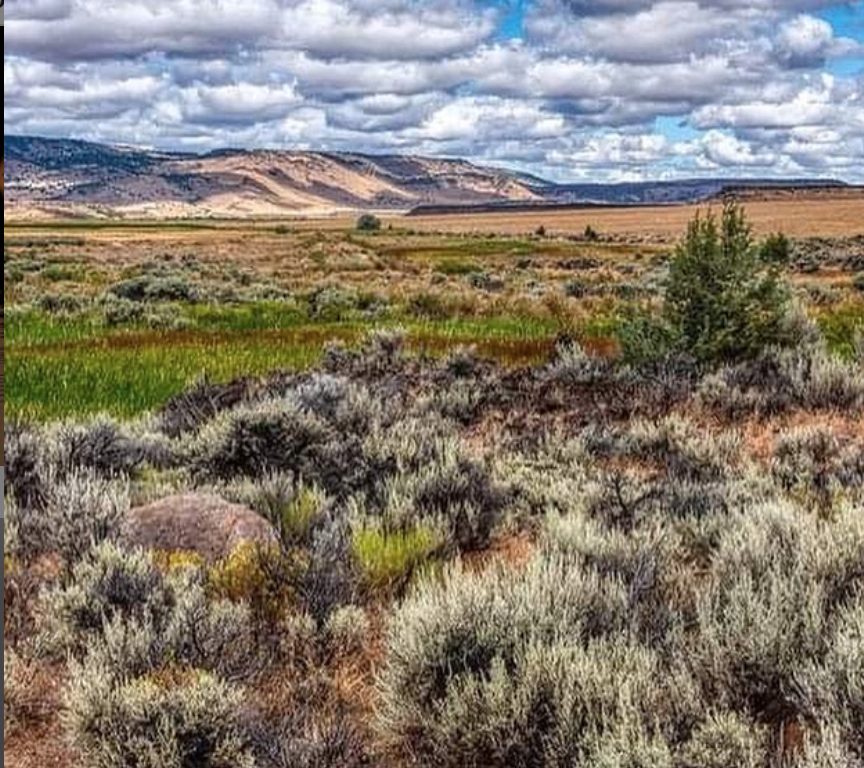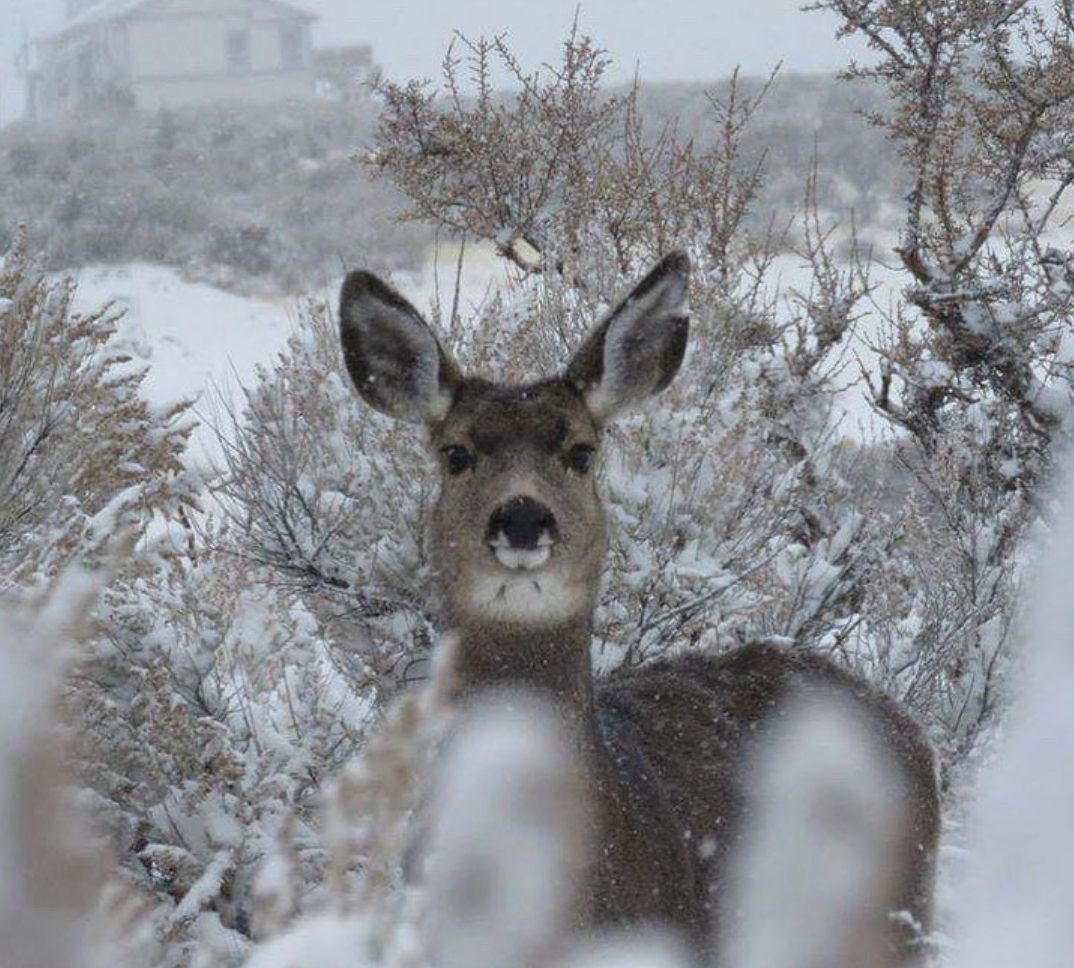Partner Spotlight: Friends of Malheur Refuge

(Header photo credit: Dan Streiffert)
The Environmental Center is excited to announce a new Partner Group, Friends of Malheur National Wildlife Refuge (MNWR) whose HQ is in Burns, Oregon. I got to speak with the Director, Janelle Wicks, to learn more about their work across Harney County and how Central Oregonians can participate in their mission. I really enjoyed learning about this special place!
Learn more about The Environmental Center’s Partner Groups here.
Tell me about your organization.
Friends of MNWR has been around since 1999. It was founded by a former biologist and land steward who was helping to acquire property for the refuge. With a few other birders and conservationists, everyone came together to create Friends of Malheur – a partner organization for the refuge that can support and do things where federal agencies cannot. (I learned that there are over 200 such Friends groups across the country!) We are a membership-supported organization. All donations are used to support the refuge in one way or another.
In the beginning, our work was mostly consultations and securing funding. In the early 2000’s, the Friends group was instrumental in completing construction work for a birding wayside on the side of the highway. Today, we focus on conservation and appreciation of natural and cultural resources through education, advocacy, and on-the-ground stewardship.
Out in the community, we are the fiscal sponsors for an artist-in-residence program. Through this program, an artist and refuge staff member are able to visit every elementary school in Harney County to deliver education programs. We also organize the Migratory Bird Festival.
What do you enjoy or appreciate about the Malheur National Wildlife Refuge?
Malheur is an oasis of sorts, inside of the desert. People usually refer to it as a high desert or sagebrush steppe ecosystem. (Janelle has a degree in Marine Biology. She joked that Malheur is essentially a ‘sagebrush sea’.) But this doesn’t nearly capture the diversity of what you see here. It’s everything from wetlands to rocky outcroppings. And because of the diversity, you get a lot of different wildlife.
What makes this place special are the little things that are hiding that you have to take time to find and appreciate. You never know what you’re going to see. We are a migration hot spot in the Pacific Fly Way. Birds stop here to rest on their journeys, so we see many anomalies.
Getting intimate with one place is really special. It’s such a vast region, and when people visit out here, they have a sense of urgency to do it all. Sure, do all the things once. Then come back and do more targeted trips. Spend a whole day or two just at Diamond Craters. Spend 8 hours at Benson Pond.
There’s really no bad time to visit, it just depends on what kind of experience you want. Right now, folks coming in October are experiencing mammal magic – coyotes, otters, and other mammals are very active right now.
How have you had to adapt during COVID-19? Do things look different these days?
It’s impacted us in a few different ways. One main role we play is as a liaison to the visiting public. Our nature store at Headquarters – which is temporarily closed – is our primary revenue source AND it’s our best opportunity to communicate with visitors. In a normal year, we help visitors understand the rules and regulations of visiting the Refuge (vs other public lands). Not having access to visitors has been hard. Unfortunately, we’ve been seeing negative human impact on the land. I miss the lack of connection to visitors – I love that part of my job.
On the other hand, without the Migratory Bird Festival and other spring events, those months gave us time to be innovative and create new tools. We used social media and newsletters to share bird surveys, offered virtual bird walks, and hosted monthly virtual trivia. And in collaboration with Portland Audubon (for whom, coincidentally, Janelle’s wife works), we developed a special ‘Harney at Home’ campaign to bring the Harney County experience to people at home. Parts of this will keep going, even once things open back up! It’s made our work more accessible to folks, especially those who are aging but want to safely explore all Malheur has to offer.
The pandemic has shown me that we are resilient. Friends and followers continue to support us. We had folks passionate about the Refuge and the work we do who donated portions of their stimulus checks to us. People who love the Refuge and enjoy time out here find value in being a part of the community our organization creates. It’s really moving.
In fact, our members were also able to support Klamath Basin National Refuge Complex and their partner non-profit, Bird AllyX, during a recent time of need. An unprecedented Avian Botulism outbreak overwhelmed their limited resources, so our members stepped up and raised almost $10,000 to help!
How did you learn about / get connected to The Environmental Center?
Our organization has a stable membership of around 700 people, 60% of which are in Oregon and 20% of that which are in the Bend area. We also have several Board members who live in Bend. Before COVID-19 hit, we were searching for a place to meet in person. We’d sometimes meet at the library or a brewery, until a Board member suggested TEC. It gives us a chance to not only receive services (like room rentals), but to support an organization with similar values. Being a Partner Group is mutually beneficial for both organizations.
How can local community members support, engage with Friends of MNWR?
We try to create opportunities for people to connect with Friends of MNWR wherever they are: Instagram, YouTube, Facebook, eNewsletters. The best entry point is our website, and from there you can determine how you prefer to connect. Signing up for our newsletter is a great way to receive learning opportunities and updates.
Memberships start at $20/year, and all members receive a 10% discount at the nature store (which is also online). We have less events heading into winter, but we are working to develop a new youth education program with the Harney County Public Library, called Bird Scouts. You don’t have to be a member to be a supporter. Sharing our work on social media and occasional donations are appreciated.
I asked about volunteering….
In a normal year, we’d have about 3-6 volunteers living on-site to keep the nature store running seven days per week and to complete various stewardship activities like fence mapping. While it’s still unclear what this will look like next year, Janelle said that volunteers will need to be self-contained (in their own RVs with amenities).
Janelle hopes that in the coming year, they will be able to adapt their volunteer program to allow a return of day trip and weekend projects. And right now, she is looking for a volunteer with a knack for writing to help with newsletters! Know anyone who may be interested?

